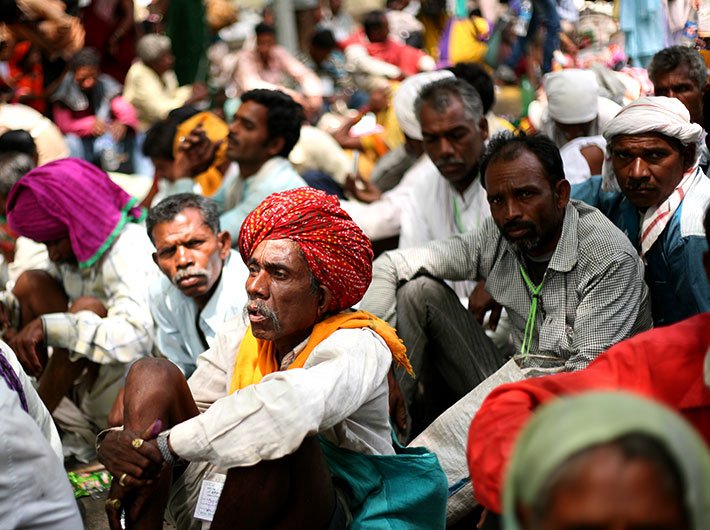Supreme court calls for continuously evolution of new yardsticks to move away from caste-centric definition of backwardness
Gurjars hit the streets in 2008 to demand the scheduled tribe (ST) status, instead of the other backward classes (OBC) tag they had, so as to get more benefits of quota in education and jobs. Later, the community filed a formal petition arguing in great detail how it was indeed backward.
On the face of it, this was odd: a community was claiming, with pride, that it wanted to be seen backward. But the phenomenon of ‘downward mobility’ was already a trend. A year earlier, a supreme court batch had to observe, “It is to be noted that nowhere else in the world do castes, classes or communities queue up for the sake of gaining backward status.”
On Tuesday, the supreme court has taken the debate on the vexed issue of the backwardness and accompanying benefits one level up. A bench of justices Ranjan Gogoi and Rohinton Fali Nariman not only struck down the UPA’s hasty decision (just ahead of Lok Sabha elections last year) to extend OBC quota to Jats, it also called for new criteria for backwardness.
READ: SC scraps Jat quota, says community is not backward
In particular, the bench has made two supremely important points: look beyond caste to find groups who really need the state’s help, and indentifying such groups should be a matter continuous evaluation. Thus, it makes a case for quota for the third gender, for example.
Here are the relevant excerpts from this landmark judgment:
“Backwardness is a manifestation caused by the presence of several independent circumstances which may be social, cultural, economic, educational or even political. Owing to historical conditions, particularly in Hindu society, recognition of backwardness has been associated with caste. Though caste may be a prominent and distinguishing factor for easy determination of backwardness of a social group, this Court has been routinely discouraging the identification of a group as backward solely on the basis of caste. Article 16(4) as also Article 15(4) lays the foundation for affirmative action by the State to reach out the most deserving.
“Social groups who would be most deserving must necessarily be a matter of continuous evolution. New practices, methods and yardsticks have to be continuously evolved moving away from caste centric definition of backwardness. This alone can enable recognition of newly emerging groups in society which would require palliative action. The recognition of the third gender as a socially and educationally backward class of citizens entitled to affirmative action of the State under the Constitution in National Legal Services Authority vs. Union of India is too significant a development to be ignored. In fact it is a path finder, if not a path-breaker. It is an important reminder to the State of the high degree of vigilance it must exercise to discover emerging forms of backwardness. The State, therefore, cannot blind itself to the existence of other forms and instances of backwardness. An affirmative action policy that keeps in mind only historical injustice would certainly result in under-protection of the most deserving backward class of citizens, which is constitutionally mandated. It is the identification of these new emerging groups that must engage the attention of the State and the constitutional power and duty must be concentrated to discover such groups rather than to enable groups of citizens to recover “lost ground” in claiming preference and benefits on the basis of historical prejudice.”
For the record, by the way, how do we define backwardness? The judgment notes,
“The National Commission of Backward Classes (NCBC) had evolved a set of guidelines, criteria, formats and parameters against which all claims for inclusion as an other backward class are required to be considered. The said parameters were evolved on the basis of the Mandal Commission Report and the judgment in Indra Sawhney. 11 indicators under three broad heads, i.e., social, economic and educational, details of which are indicated below, were identified.
A. Social
(i) Castes/Classes considered as socially backward by others.
(ii) Castes/Classes which mainly depend on menial labour for their livelihood.
(iii) Castes/ Classes where at least 25% females and 10% males above the State average get married at an age below 17 years in rural areas and at least 10% females and 5% males do so, in urban areas.
(iv) Castes/Classes where participation of females in work is at least 25% above the State average.
B. Educational
(v) Castes/Classes where the number of children in the age group of 5-15 years who never attended school is at least 25% above the State average. where the average value of family assets is at least 25% below the State average.
(vi) Castes/Classes where the rate of student drop-out in the age group of 5-15 years is at least. 25%. above the State average.
(vii) Castes/Classes amongst whom the proportion of matriculates is at least 25% below the State average.
C. Economic
(viii) Castes/Classes where the average value of family assets is at least 25% below the State average.
(ix) Castes/Classes where the number of families living in Kuccha houses is at least 25% above the State average.
(x) Castes/Classes where the source of drinking water is beyond half a kilometer for more than 50% of the households.
(xi) Castes/Classes where the number of households having taken consumption loan is at least 25% above the State average.
“Relative weight-age to each of the parameters under the aforesaid three broad heads is to be in the proportion of 3:2:1. The Justice K.C. Gupta Commission however followed 12 Social indicators, 7 Educational indicators and 5 Economic indicators. That apart, according to the Commission, backwardness that was required to be determined, is primarily social backwardness which, in turn, depended on how the other castes/classes perceived whether the Jats were socially backward or not. Justice K.C. Gupta Commission did not proceed in the matter from the aforesaid perspective. Further in its report the NCBC found that indicators like Infant Mortality Rate, Maternal Mortality Rate, Deliveries at Home etc. had been considered to determine social backwardness. Such data, according to the NCBC, are actually Public Health Statistics and are wholly irrelevant for determination of social backwardness.”



